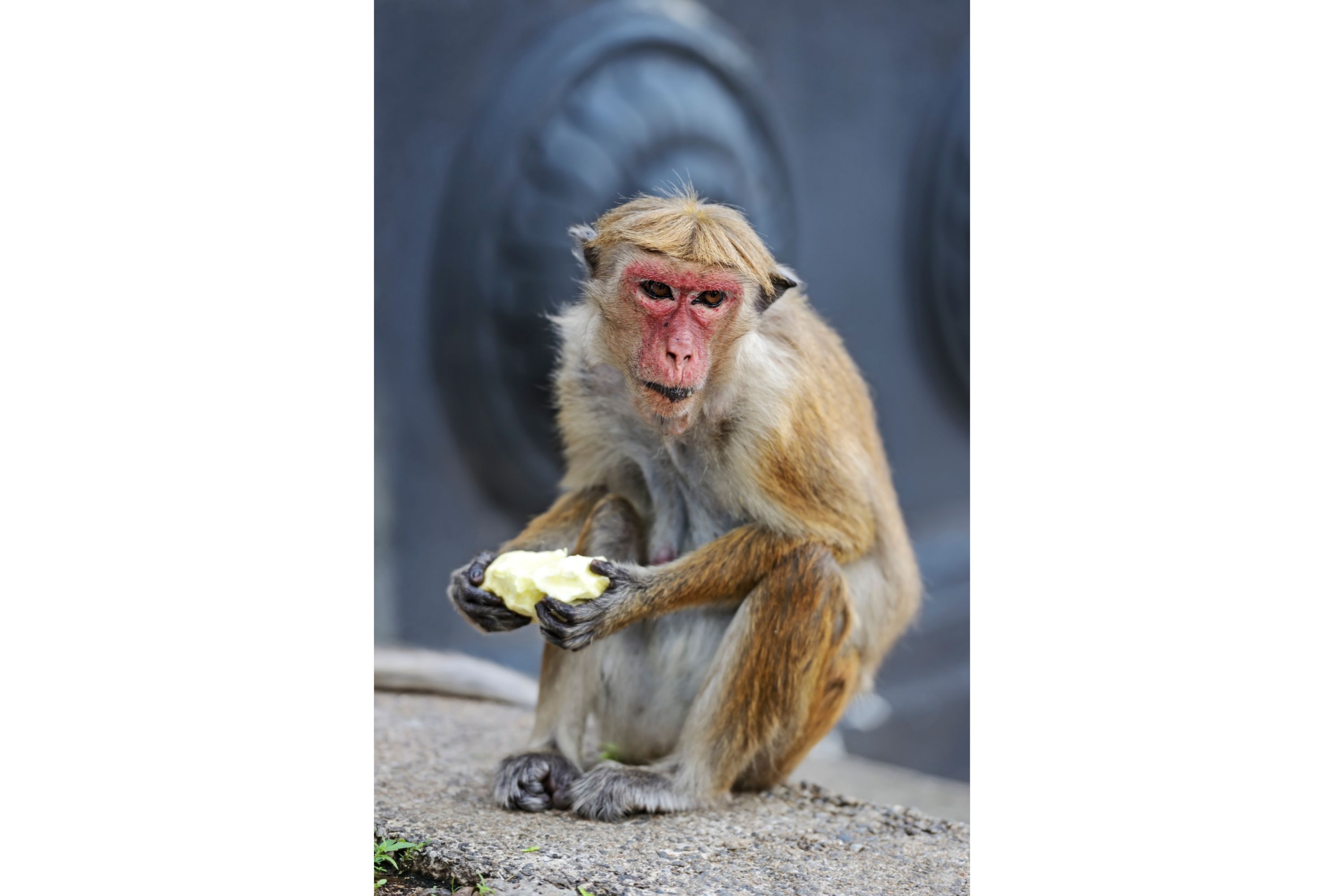Bonnet macaque
(Macaca radiata)

Description
The bonnet macaque (Macaca radiata), also known as zati, is a species of macaque endemic to southern India. Its distribution is limited by the Indian Ocean on three sides and the Godavari and Tapti Rivers, along with its related competitor the rhesus macaque in the north.Land use changes in the last few decades have resulted in changes in its distribution boundaries with the rhesus macaque, raising concern for its status in the wild. The bonnet macaque feeds on fruits, nuts, seeds, flowers, invertebrates, and cereals. In southern India, this macaque exists as commensal to humans, feeding on food given by humans and raiding crops and houses. The bonnet macaque has a very wide range of gestures and behaviors, which can be easily differentiated. Lip-smacking is one of the most common affiliative behaviors, where one individual may open and close its mouth in rapid succession, with its tongue between its teeth and its lips pressing against each other, giving an audible sound. A grimace is the most common gesture of fear or submission that a subordinate shows to a dominant individual during aggressive encounters. It consists of pulling back its upper lip, showing its upper teeth. It also has distinct alarm calls for predators such as pythons and leopards The bonnet macaque are very social animals and they communicate in a different range of facial expressions. The bonnet macaque, like other macaques, shares a linear dominance hierarchy; the alpha male is the most dominant male of the troop, followed by a beta male and a gamma male, and so on according to their dominance. Similarly, females also follow this linear hierarchy. The male and female hierarchies are different and of a non-overlapping or non-mixing types. Males are usually dominant over females. In their social groups females tend to stay in the same group they were born in, whereas males tend to disperse. The females' dominance hierarchy is stable, whilst the males' dominance hierarchy is very dynamic. In the male hierarchy, males close in rank often fight to rise in rank. A male has the best chance of obtaining a high rank in his prime age, resulting in the greatest benefits to reproduction. High-ranking individuals have first access to breeding females. Females are receptive during only a few months in a year, resulting in competition between males. In this situation, the ranks established by aggressive encounters come into play.
Taxonomic tree:







